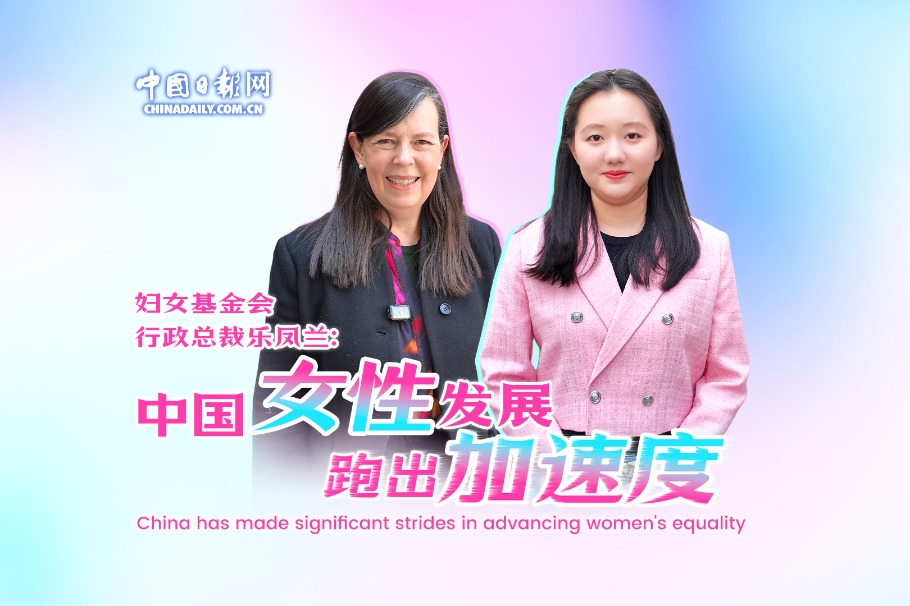Congregated advantages


Improving city clusters will nurture new regional powerhouses for the Chinese economy
Facing the volatile external environment, reduced external demand and broken industry l chains, China needs to focus on the high-quality development of its regions. The key is to nurture new economic powerhouses for the regions by improving the city clusters, industry chain clusters and the market-based allocation of factors of production, along with creating a business-friendly environment and attracting talents.
City clusters take shape in the urbanization process of populous countries. China's urbanization rate has now passed 60 percent, and several metropolitan areas and urban agglomerations have emerged, such as the Beijing-Tianjin-Hebei city cluster, the Yangtze River Delta, the Pearl River Delta, cities in the middle reaches of the Yangtze River, and the Chengdu-Chongqing area.
The development of a city cluster should focus on three circles: the megacity itself as the core with an area of 2,000-3,000 square kilometers. Centered on the core city, the metropolitan area with a radius of 100 kilometers is the second circle, and the city cluster with a radius of 200 km is the outer circle that is composed of the megacity and surrounded large, medium-sized and small cities.
Instead of only focusing on its own economy, the core city has the responsibility to drive the entire economy of the city cluster forward, which means it needs to share some resources with neighboring cities. In turn, the satellite cities must coordinate with each other to better serve the core city.
The emerging city clusters also make it possible for China to create industry chain clusters. The globalized industry chains and supply chains ruptured by the pandemic have aroused concern. Regions with relatively complete industry chains and self-contained industry clusters have recovered faster and better than those highly dependent on global supply chains. For example, in some places, more than 80 percent of the parts for the electronics manufacturing are produced locally. This model helps reduce the risks of sourcing components from around the world.
Different from the traditional division of labor that disperses horizontally around the world, the vertically integrated industry chain cluster is distributed in a region with a radius of one to three hours' driving where more than 70 percent of parts and semi-finished products are produced.
During the pandemic, this model has outperformed the globalized division of labor in efficiently integrating factors of the entire industry chain, matching supply and demand sides, and boosting innovation through benign competition along the entire chain. These regional industry chain clusters have also been able to form their core competitiveness by reducing logistics costs and making up for the shortcomings of innovation.
Improving the market-based allocation of factors of production is also key to promoting regional economic development. For various reasons, the factor market suffers from excessive administrative intervention, poor market operation and low resource allocation efficiency. In April, the Chinese government issued a guiding principle on building a more complete market-oriented allocation system for factors of production, scaling up the efforts of nurturing new drivers for regional economies.
Against the backdrop of the pandemic, besides the counter-cyclical regulation on the demand side, greater importance should be paid to the supply side, including the market allocation of factors such as land, labor, capital, technologies and data. Any structural reform on the supply side of factors is fundamental and systematical, which is projected to bring trillion-yuan level dividends every year. As local economic growth and fiscal revenue are largely curbed currently, such reforms, offering huge returns at little or even no cost should be considered.
For example, the document issued in April proposes deepening reform of the market-based allocation of industrial land. This will not only revitalize the industrial land that is inefficiently used and promote industrial upgrading, but also help cut the costs of land use.
Another example is the document calls for relaxing the restrictions on the urban household registration system, except for a few megacities. This will benefit migrant workers, helping them become permanent urban residents; and at the same time, it will prolong their effective working time, increase the supply of urban labor and unleash potential demographic dividends.
Continuous improvement of the business environment will help regional development, especially in the pandemic when most enterprises are challenged. Local governments have the responsibility to promptly introduce pro-business measures. It has been recognized by all that creating a convenient business environment is a common task for all cities. However, detailed measures are skewed to some extent. The local governments should adopt the pre-entry national treatment plus negative list management, and ensure fair competition with rules. Those who take the lead in creating a fair environment for business will win the favor of investors in the next round of competition.
In addition, intellectual property protection must be further strengthened. Some innovative technologies in developed countries are likely to be commercialized in China to reap benefits from the huge Chinese market. Cities well aware of and effectively enforcing intellectual property protection will be the best choice for investors.
Finally, high-level regional development will not be realized without high-caliber human resources and entrepreneurship. Therefore, it is crucial to introduce innovative talents and entrepreneurs and improve related systems, which has released the enthusiasm for innovation and start-ups.
However, giving too much incentive to scientists and technologists will be likely to constrain other parties of the entities. It is useful to learn from developed countries' experience and mobilize three parties-scientific research institutions, scientists and technologists, and companies-to accelerate transforming scientific research results into products to realize their market value.
The author is former mayor of Chongqing and vice-chairman of the China Center for International Economic Exchanges. The author contributed this article to China Watch, a think tank powered by China Daily. The views do not necessarily reflect those of China Daily.


































